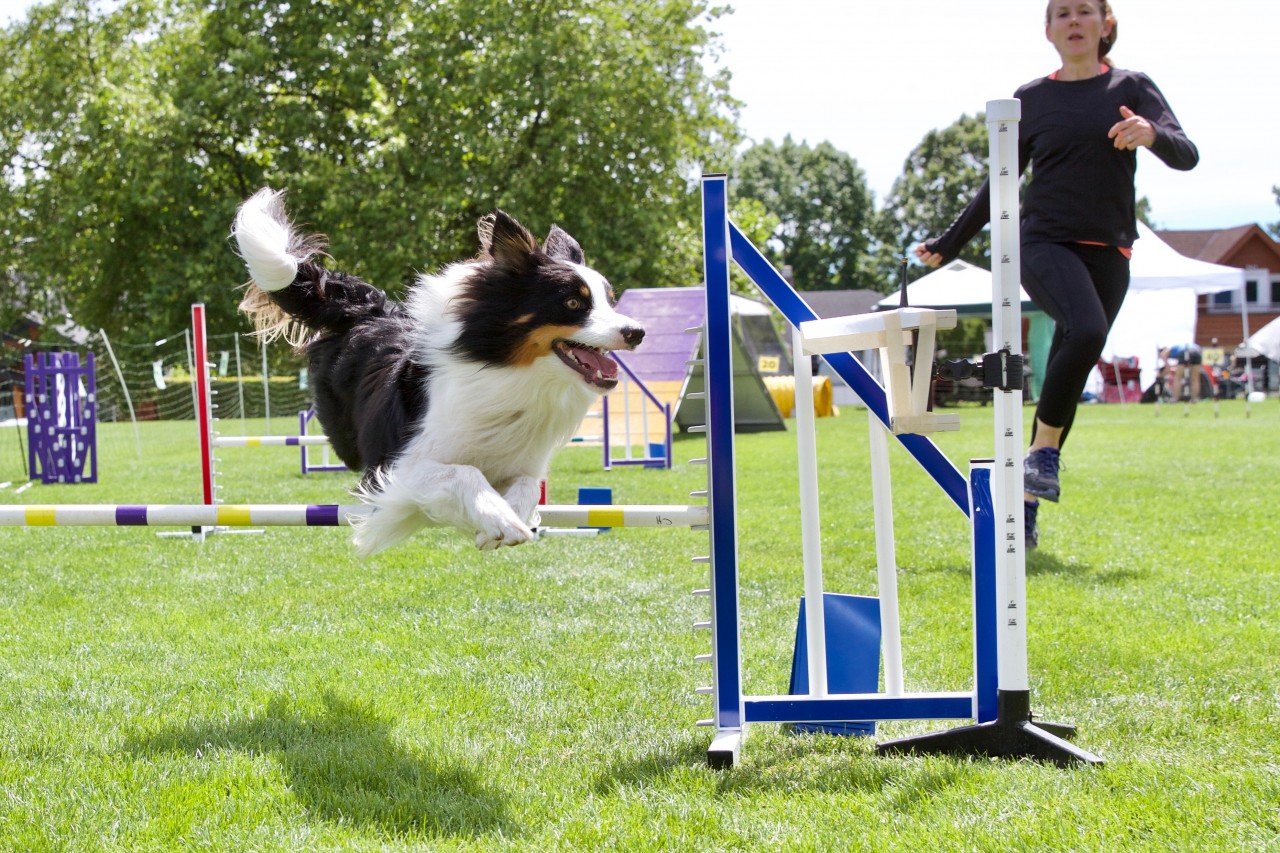Finding Connection on Course — A Roadmap for the Agility Handler
The challenge of connection while sprinting on course is real. It is a very hard skill! And while there are physical requirements, and we are going to talk about them, there is also an aspect of using your peripherals and general awareness of where you are on the course. Here you'll find a roadmap to prepare your body for the asks that you make on course, and how to pull the use of peripherals and connection into your sprint practice.
The most effective and transferrable approach I've found is to:
- develop thoracic mobility.
- develop rotational strength.
- work on sprinting mechanics/speed independent of connection.
- practice connection while sprinting.
The first thing that is restrictive for people is their actual ability to rotate through their thoracic spine, the ribcage area. This is the stretch that I have found to be the very best, and the fastest, for developing this rotational ability.
I also find that mobility through the side of the torso can restrict connection. This fantastic stretch will care for this, and it can be done anywhere with minimal time.
What's next is the rotational strength through your torso. Why? Rotational abdominal work is often overlooked in fitness regimes, and agility handlers need it. Being strong in this movement will allow you to rotate more fully which will enable you to pull into a better connection. You can use a band or a TheraBand, or if you have access to a gym, a cable system to execute it. What I want you to pay close attention to is how much my shoulders are twisting and how my eyes follow my hands.
Building Connection while Sprinting
We've covered the quickest, and most effective, ways to build the rotation and now we're going to discuss connection while sprinting. This is where the nuance of sprint work, and agility focused sprint work, comes in. Fast straight lines are great and, as agility handlers, you need more than this. If you haven't taken it yet, Megan Foster has a fabulous course called "Handler Mechanics" that walks you through how to use peripherals, and your body position, to polish and level up YOUR role on the field that compliments this work perfectly.
To note, I am working on the assumption that you are comfortable moving forward while looking away from where you're heading. In the course I teach, Fast & Agile, I work on this concept at speed with the athletes. After we cover effective sprint stride, connection while sprinting is a piece of it. I also have them set cones out in their skill work portion and as they approach the cone, using their peripherals, it becomes a cue to either change the connection arm or change their direction in terms of where they are heading in the skill work. We add verbals to this picture later in the course material.
These are three examples of bringing the concept of connection into sprint work in a very real way, we only want directly transferrable stuff folks. There's no time for fluff, we have ribbons to get! Again, being able to run fast in a straight line is important. However, the agility handler needs to be operational at full speed with only one of their arms in action and a lot of the time looking over the shoulder, which is a very different skill set. One that, with practice, will become second nature. This is the magic of muscle memory!
By accepting you will be accessing a service provided by a third-party external to https://www.fenzidogsportsacademy.com/
